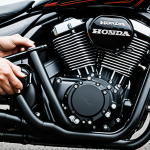Understanding Dual-Clutch Transmissions
Dual-clutch transmissions (DCT) represent a fascinating leap in automotive technology, offering a uniquely smooth driving experience. Unlike traditional automatic transmissions, which use a torque converter, DCTs utilise two separate clutches for odd and even gear sets, enabling pre-selection of the next gear. This innovative design ensures a rapid and seamless transition between gears, resulting in faster acceleration and improved fuel efficiency.
When compared to manual transmissions, DCTs relieve drivers from the need to manually engage the clutch pedal and shift gears, enhancing convenience without sacrificing performance. The system combines the sportiness of manual gear-shifting with the comfort and ease associated with automatics. In the UK, certain car models are more frequently fitted with DCTs, particularly those aiming to strike a balance between performance and efficiency.
Also to discover : Mastering Drug-Impaired Driving Laws: An In-Depth Guide to UK Regulations and Penalties
Among the benefits, DCTs excel in providing superior performance, especially in dynamic driving conditions where quick gear changes are crucial. Their efficiency often leads to better fuel economy, which is a key consideration for environmentally conscious shoppers. For drivers passionate about performance, dual-clutch systems offer a thrilling, engaging experience that other transmission types struggle to match. This cutting-edge technology continues to shape the future of automotive design and consumer choices.
Expert Tips for Seamless Shifting
Achieving seamless shifting in dual-clutch transmissions enhances both driving pleasure and vehicle longevity. Understanding the mechanics of dual-clutch systems is crucial for smooth gear transitions. Unlike traditional manuals or automatics, dual-clutch transmissions allow for pre-selection of gears, enabling lightning-fast shifts. To maximize performance, driver techniques play a significant role.
In parallel : Fine-Tuning Your Clutch Pedal: A Comprehensive Guide to Adjusting Free Play in Manual Cars
Techniques for Smooth Gear Transitions
Firstly, practice throttle control. Maintaining a steady throttle input during gear transitions can prevent jolts and aid in a smoother driving experience. In situations requiring rapid acceleration, gradual throttle application allows the transmission to shift efficiently, minimizing lag.
Importance of Throttle Control During Shifting
Effective throttle control is fundamental as it ensures that the engine power aligns perfectly with the desired gear speed. This harmony between engine load and gear selection helps in reducing excess strain on the transmission components.
Timing and Coordination for Maximum Efficiency
Finally, timing and coordination are critical. React promptly to changes in driving conditions—such as inclines or sudden decelerations—by adjusting your driving input accordingly. These practices not only result in a seamless driving experience but also optimize fuel efficiency. Mastering these techniques helps owners get the most out of their dual-clutch systems.
Troubleshooting Common Issues
Resolving dual-clutch problems requires understanding the mechanics involved. Shifting issues, such as hesitation or jerking, often stem from software glitches or mechanical wear. Regular maintenance can mitigate many of these issues. Essential maintenance tips include checking oil levels and ensuring software updates are current. This proactive approach helps reduce strain on transmission components and extends lifespan.
When faced with continued problems despite routine checks, it’s crucial to seek professional help. Early intervention can prevent more costly repairs. Diagnostic tools used by professionals can accurately pinpoint issues, ensuring effective solutions. Understanding these warning signs and prioritising transmission health is beneficial for car longevity.
In some cases, however, more complex repairs may be needed. Professional guidance, particularly in the UK, ensures your vehicle receives the most appropriate care in line with industry standards. Mechanics use advanced diagnostic equipment to assess and restore optimal performance. Identifying the right time to consult experts, based on observable issues, is a key step in maintaining your dual-clutch transmission. Addressing problems swiftly and efficiently helps preserve your driving experience and prevent long-term damage.
Comparisons with Other Transmission Types
Transmission comparisons play a crucial role in helping drivers make informed automotive choices. When evaluating dual-clutch transmissions (DCT) against Continuously Variable Transmissions (CVTs) and manual transmissions, several factors come into play. DCTs generally boast superior performance metrics due to their ability for rapid gear changes and improved efficiency. In contrast to CVTs, which often prioritize smoothness over speed, DCTs offer a more engaging driving experience, especially in dynamic driving scenarios.
Advantages of dual-clutch systems over traditional manuals include eliminating the need for manual gear shifts, reducing driver fatigue during long journeys. Automatic adjustments in DCTs lead to heightened adaptability across various driving conditions, including both city traffic and open highways.
In the UK, a trend is apparent where user preferences lean towards DCTs for their blend of speed, efficiency, and versatility. As newer models emerge, the UK automotive market increasingly favours these sophisticated systems. Market trends show a growing alignment with environmentally conscious and performance-focused drivers seeking a balanced solution that doesn’t compromise on either front. This shift reflects the ongoing evolution of transmission technology.
Specific Car Models and Their Dual-Clutch Systems
Dual-clutch transmissions are becoming a staple within the UK automotive market, showcasing an intriguing interplay between advanced engineering and user demand. Several car models stand out for their innovative use of dual-clutch systems.
For instance, the Volkswagen Golf GTI is revered for its dynamic performance, sporting a sophisticated dual-clutch system that ensures quick shifts and a thrilling drive. Another popular choice is the Audi S3, which combines luxury with outstanding shift responsiveness, offering drivers a seamless experience across varying terrains.
When optimizing dual-clutch performance in these models, consider manufacturer-specific tips. Regular software updates enhance transmission control and longevity. Calibration adjustments tailored to the specific driving style can further refine gear transitions.
Insight into manufacturer variations reveals interesting enhancements; BMW’s dual-clutch design, for instance, prioritizes fluid gear changes and improved fuel economy, catering to both city and highway travel. These detailed adjustments in different models significantly impact driving pleasure and efficiency.
Understanding the dual-clutch systems across such models empowers drivers to make informed automotive choices, tailoring their vehicle use to both style and functionality. The continuous improvement in transmission technology highlights the pivotal role of dual-clutch systems in modern automotive engineering.





